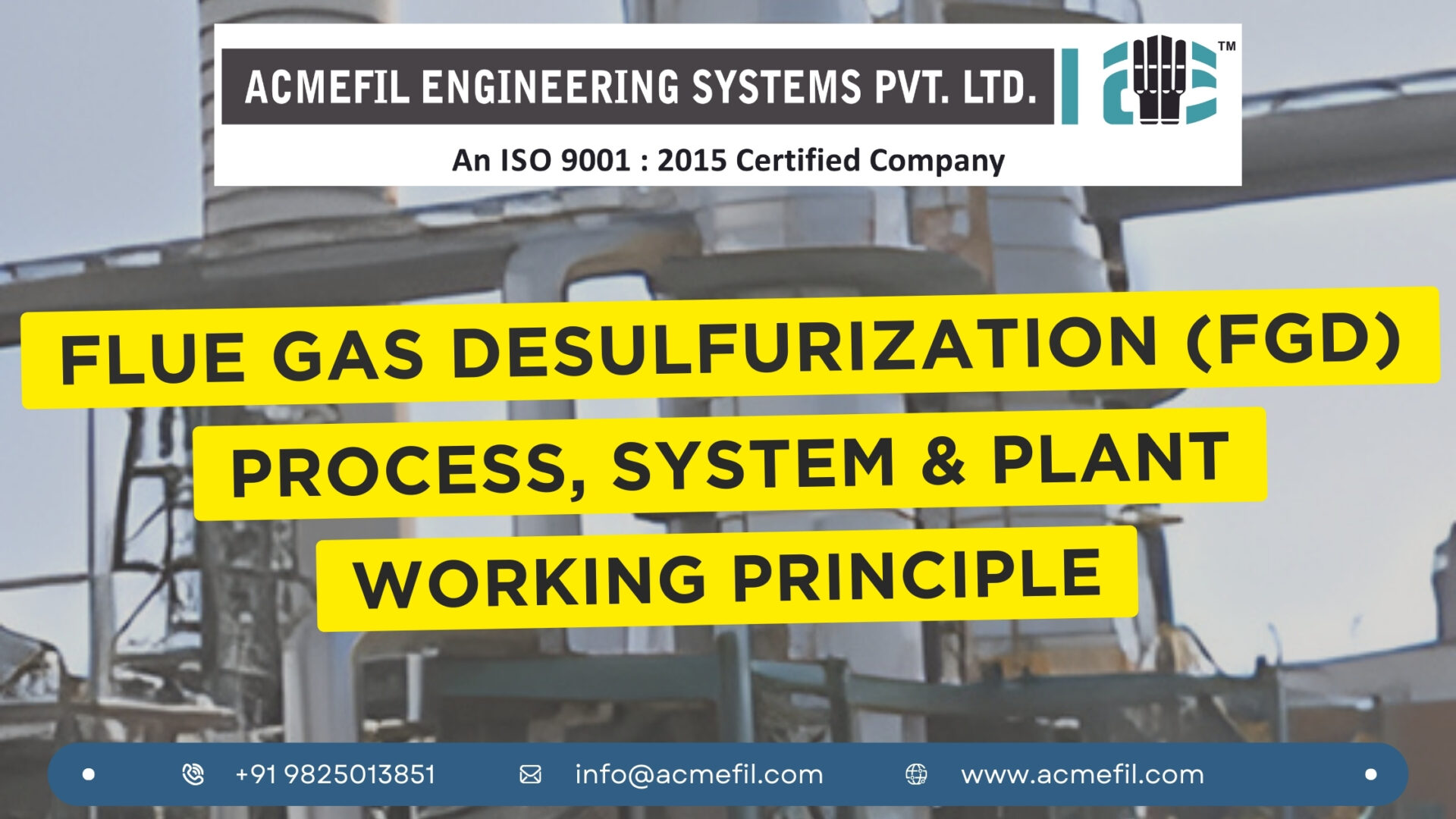Flue Gas Desulfurization (FGD) plays a crucial role in reducing sulfur dioxide (SO₂) emissions from industrial exhaust gases. This technology is essential for minimizing air pollution and adhering to environmental regulations. This post will delve into the FGD process, system components, and how an FGD plant operates, highlighting the importance of this technology in industrial applications.
What is Flue Gas Desulfurization (FGD)?
Flue Gas Desulfurization (FGD) encompasses a set of technologies designed to remove sulfur dioxide (SO₂) from the exhaust flue gases of fossil fuel power plants and other industrial processes. This removal is critical for reducing air pollution and preventing acid rain.
The Flue Gas Desulfurization (FGD) Process
To understand the FGD process, consider the following key steps:
- Gas Collection: The system collects flue gas from the combustion process. This gas typically contains a mixture of sulfur dioxide, nitrogen oxides, carbon dioxide, and particulate matter.
- Absorption: The system directs the collected flue gas through an absorber or scrubber. Here, the gas interacts with a scrubbing solution, usually a mixture of water and an alkaline substance like limestone (calcium carbonate) or lime (calcium oxide).
- Chemical Reaction: The scrubbing solution reacts with sulfur dioxide to form calcium sulfite (CaSO₃) or calcium sulfate (CaSO₄), commonly known as gypsum. The primary reactions include:
- CaCO₃ + SO₂ → CaSO₃ + CO₂
- CaO + SO₂ → CaSO₃
- CaSO₃ + ½O₂ → CaSO₄
- Separation: The system separates the resultant by-products (calcium sulfite or gypsum) from the gas stream. Industries can use gypsum in various applications, such as construction and agriculture.
- Clean Gas Release: The system releases the cleaned flue gas, now significantly lower in sulfur dioxide, into the atmosphere through a stack. This ensures compliance with environmental regulations for SO₂ emissions.
Components of an FGD System
An effective FGD system includes several critical components:
- Absorber/Scrubber: This primary unit allows the flue gas to contact the scrubbing solution and absorb SO₂.
- Scrubbing Solution Preparation: This system prepares and supplies the alkaline scrubbing solution to the absorber.
- Reaction Tank: Chemical reactions occur here, converting SO₂ to gypsum or calcium sulfite.
- Solid-Liquid Separator: This equipment separates the by-products from the liquid scrubbing solution.
- Clean Gas Outlet: This system ensures the safe release of clean flue gas into the atmosphere.
FGD Plant Operation
An FGD plant integrates various systems to remove sulfur dioxide from flue gases efficiently. Here’s an overview of FGD plant operations:
- Flue Gas Entry: The plant directs flue gas from the combustion process to the absorber.
- Absorption and Reaction: In the absorber, the flue gas interacts with the scrubbing solution, leading to chemical reactions that convert SO₂ into gypsum or calcium sulfite.
- By-Product Handling: The plant collects and processes reaction by-products. Gypsum can be dewatered and repurposed, while calcium sulfite may require additional treatment.
- Emission Control: The plant releases the cleaned flue gas through a stack, ensuring it meets regulatory standards for sulfur dioxide emissions.
- System Monitoring: Continuous monitoring and control systems optimize operation and ensure compliance with environmental regulations.
Benefits of Flue Gas Desulfurization
Implementing an FGD system offers several benefits:
- Environmental Protection: The system reduces SO₂ emissions, decreasing air pollution and acid rain.
- Regulatory Compliance: It helps industries meet stringent environmental regulations.
- By-Product Utilization: The process produces valuable by-products like gypsum, useful in construction and agriculture.
- Improved Air Quality: The system enhances overall air quality by removing harmful pollutants from flue gases.
In conclusion, the flue gas desulfurization (FGD) process is vital for reducing sulfur dioxide emissions from industrial exhaust gases. By understanding the FGD process, system components, and plant operations, industries can effectively implement this technology to protect the environment and comply with regulations.


